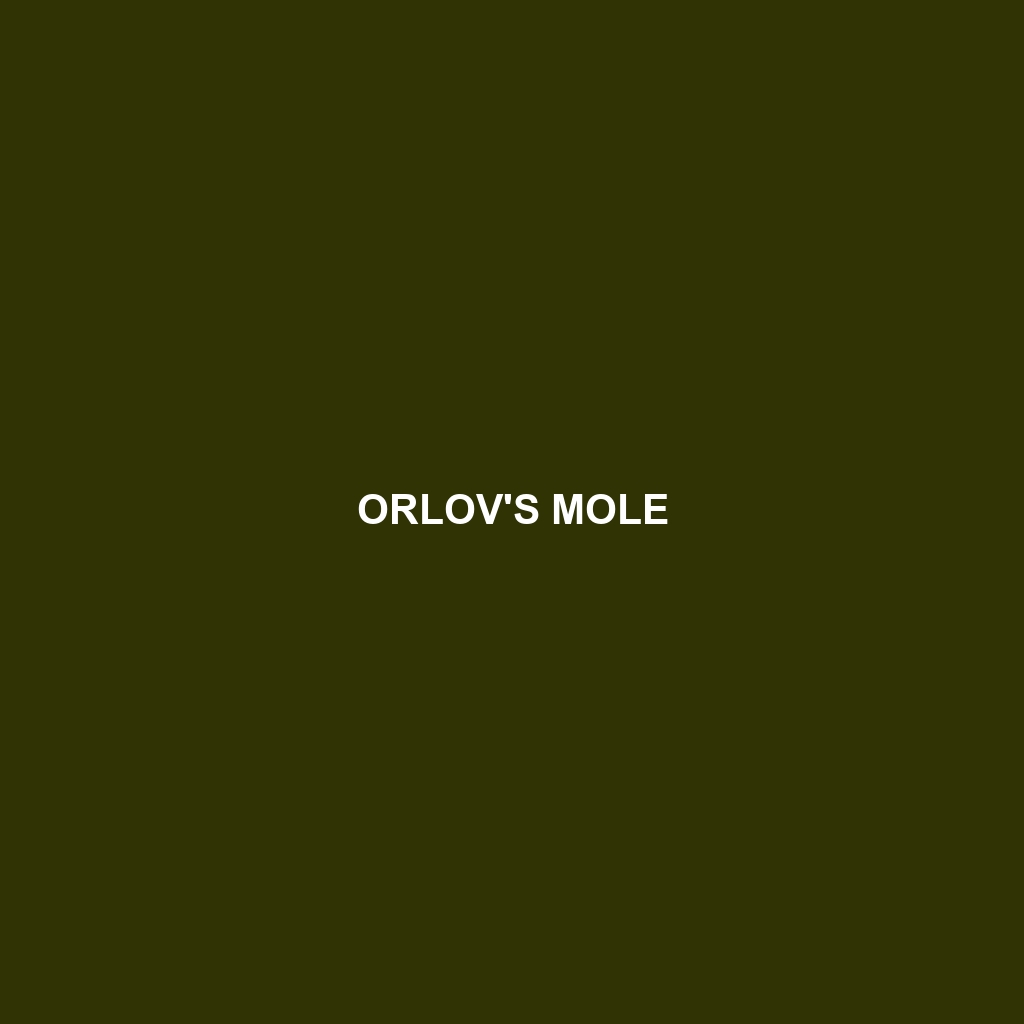Species Description: Orlov’s Mole
Common Name: Orlov’s Mole
Scientific Name: Talpa orlovi
Habitat
Orlov’s Mole is primarily found in the eastern regions of Europe and parts of western Asia. It thrives in temperate forest biomes and grasslands, often inhabiting moist, loamy soils rich in organic matter. These moles prefer areas with abundant vegetation, which provide ample cover and foraging opportunities.
Physical Characteristics
This relatively small species of mole weighs between 90-130 grams and measures about 15-20 cm in length. Orlov’s Mole features velvety, dark brown fur that offers excellent camouflage within its natural habitat. Its cylindrical shape, short limbs, and broad, shovel-like forelimbs are specially adapted for digging. Notably, it has small, almost non-existent eyes, adapted to its subterranean lifestyle.
Behavior
Orlov’s Mole is primarily a solitary creature, known for its underground tunneling behavior. It constructs extensive burrow systems, which not only serve as homes but also as foraging grounds. Most active at dusk and during nighttime, these moles engage in various vocalizations that include squeaks and chirps, particularly during mating seasons. Their ability to dig rapidly allows them to evade predators and efficiently find food.
Diet
The diet of Orlov’s Mole mainly consists of insects, earthworms, and other small invertebrates found in the soil. It also consumes roots and tubers, making it an important species for soil aeration. This carnivorous diet aligns with its adaptations for a subterranean lifestyle, allowing it to consume prey while tunneling underground.
Reproduction
Orlov’s Mole breeds once a year, typically during the spring months. After a gestation period of about 4-5 weeks, the female gives birth to a litter of 2-5 offspring. The young moles are born blind and develop quickly, beginning to forage independently after approximately 3-4 weeks. Parental care is crucial during this period, as the mother protects her young from potential threats.
Conservation Status
Currently, Orlov’s Mole is classified as Vulnerable due to habitat loss resulting from agricultural expansion and urban development. Conservation efforts are necessary to preserve their natural habitats and ensure their survival in the wild.
Interesting Facts
One fascinating fact about Orlov’s Mole is its unique adaptation to a life spent underground; it can dig up to 15 meters of tunnels in a single night! Additionally, this mole is known for its impressive sense of touch, aided by sensitive hairs on its snout that help it navigate dark, subterranean environments.
Role in Ecosystem
Orlov’s Mole plays a significant role in its ecosystem by aerating the soil and controlling pest populations through its diet. Its burrowing habits promote healthy soil ecosystems, facilitating nutrient cycling and supporting plant growth. As both predator and prey, Orlov’s Mole also contributes to the biodiversity in its habitat, interacting with various species across the food web.
